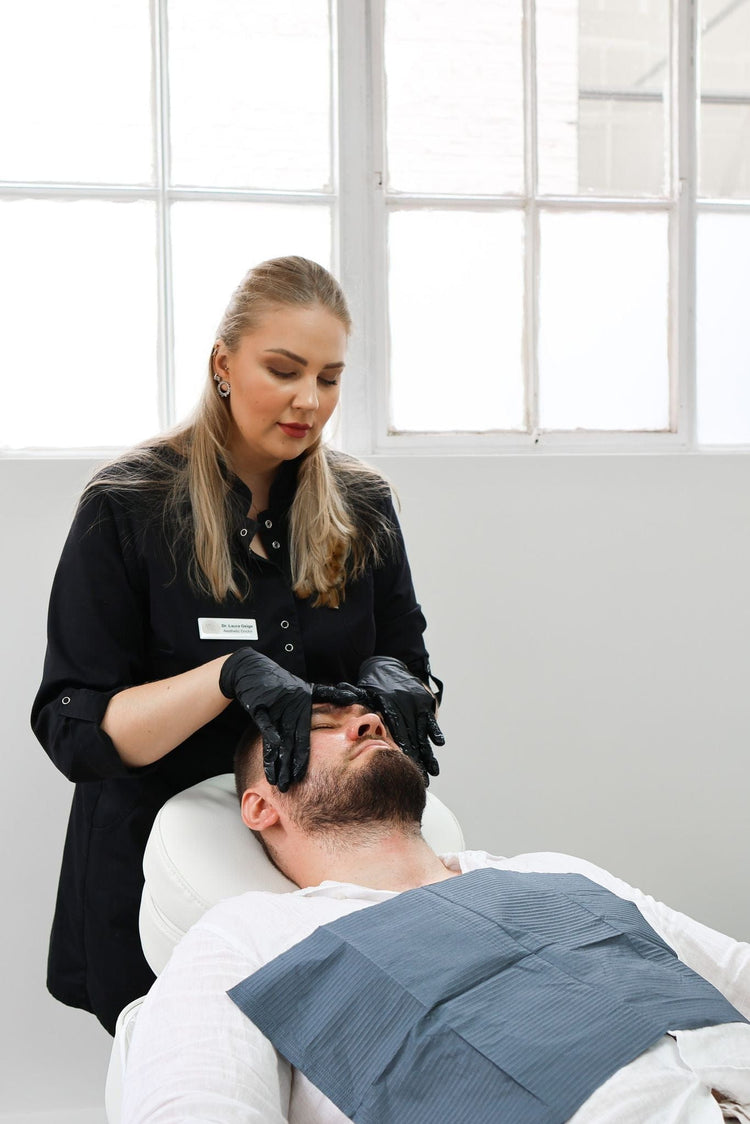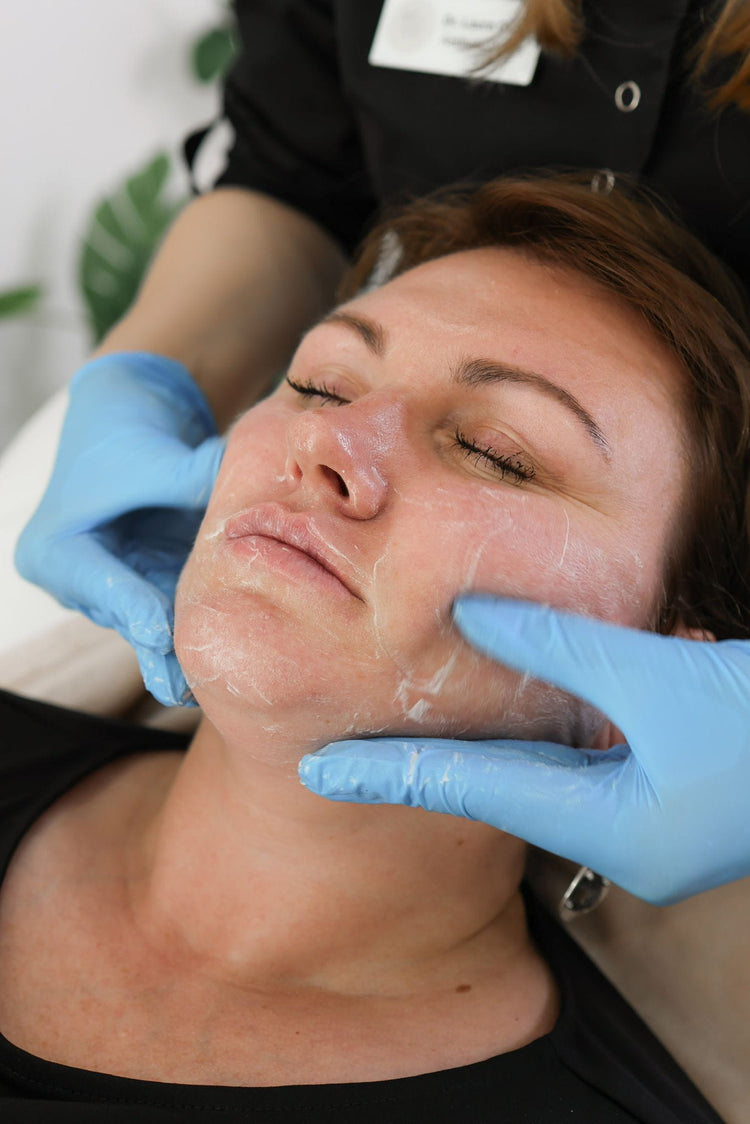Understanding Wrinkles and Fine Lines
Wrinkles and fine lines are an inevitable part of aging, but they can impact one’s self-confidence and appearance. These creases in the skin are formed by a combination of factors including genetics, sun exposure, and facial expressions. Understanding the causes and characteristics of wrinkles is crucial for choosing effective treatment options.
Causes of Deep Wrinkles and Fine Lines
Deep wrinkles and fine lines develop primarily due to the natural aging process. Over time, our skin loses collagen and elastin, proteins that provide structure and elasticity. This loss leads to a decrease in skin firmness and plumpness, making wrinkles more prominent.
Sun exposure is another significant contributor. Ultraviolet (UV) radiation from the sun damages the skin’s fibers, accelerating the breakdown of collagen and elastin. This damage manifests as premature aging, including deeper wrinkles and fine lines.

Repeated facial expressions, such as smiling, frowning, and squinting, also contribute to wrinkle formation. These movements create creases in the skin over time, leading to the development of “expression lines” around the eyes, forehead, and mouth.
Types of Wrinkles and Fine Lines
Understanding the different types of wrinkles and fine lines can help guide skincare choices. Fine lines are typically shallow and subtle, appearing as delicate creases on the skin’s surface. They often develop around the eyes, forehead, and corners of the mouth. Deeper wrinkles are more pronounced indentations that result from significant collagen and elastin loss. These wrinkles can form on various parts of the face, including the forehead, cheeks, and around the mouth.
Some common types of wrinkles include crow’s feet (fine lines radiating from the outer corners of the eyes), laugh lines (wrinkles that appear at the corners of the mouth when smiling), frown lines (wrinkles between the eyebrows), and marionette lines (wrinkles extending downwards from the corners of the mouth). Identifying these specific wrinkle types can help in determining appropriate treatment options.
The Role of Skincare Consultations
The quest for smoother, younger-looking skin often leads individuals to explore various skincare solutions. Skincare consultations play a vital role in this journey by providing personalized guidance and treatment recommendations tailored to individual needs.
Personalized Assessments
During a consultation, a dermatologist or esthetician will conduct a thorough assessment of your skin, taking into account your medical history, lifestyle habits, and specific concerns. This personalized assessment allows them to determine the underlying causes of your wrinkles and fine lines. They may examine your skin for signs of sun damage, dehydration, or other factors contributing to aging.
Based on the assessment, the skincare professional can recommend a customized treatment plan that addresses your individual needs. This may involve a combination of topical creams, chemical peels, microdermabrasion, laser therapy, or injectables like Botox or fillers. A consultation helps ensure you receive the most effective treatments for your specific wrinkle concerns.
Furthermore, a skincare consultation provides an opportunity to learn about proper skincare practices and product recommendations. You’ll receive guidance on how to protect your skin from further damage, such as wearing sunscreen daily and avoiding smoking. A professional can educate you on the importance of maintaining a consistent skincare routine that includes cleansing, exfoliating, moisturizing, and using antioxidants.
Customized Treatment Plans
Skincare consultations are essential for effectively treating deep wrinkles and fine lines. A consultation allows a skincare professional to personalize a treatment plan based on individual needs and skin type.
- A thorough skin analysis will identify the specific causes of wrinkles, such as sun damage, collagen loss, or repetitive facial expressions.
- Based on this analysis, the professional can recommend a tailored combination of treatments like topical creams, chemical peels, microdermabrasion, laser therapy, Botox, or fillers.
- Consultations also provide valuable insights into proper skincare practices, including sun protection, cleansing, exfoliating, moisturizing, and using antioxidants, helping to prevent further wrinkle formation.
Product Recommendations
Skincare consultations are crucial for effectively addressing deep wrinkles and fine lines. During a consultation, a dermatologist or esthetician will thoroughly analyze your skin to determine the underlying causes of your wrinkles. They consider factors such as sun exposure, genetics, and lifestyle habits.
Based on this assessment, they can recommend a personalized treatment plan tailored to your specific needs. This might involve topical creams containing retinol or vitamin C, chemical peels to exfoliate and stimulate collagen production, microdermabrasion for smoother skin texture, or laser therapy to target wrinkles and pigmentation. For more severe wrinkles, injectable treatments like Botox or fillers may be recommended.
A skincare consultation also provides valuable guidance on proper skincare practices. You’ll learn about the importance of sun protection, cleansing, exfoliating, moisturizing, and using antioxidants to protect your skin from further damage and maintain its youthful appearance. By incorporating these recommendations into your daily routine, you can effectively manage existing wrinkles and minimize the formation of new ones.
Effective Treatments for Wrinkles and Fine Lines
Wrinkles and fine lines are a natural part of aging, but many seek ways to minimize their appearance. Understanding the causes and characteristics of these creases is key to choosing effective treatments.
Chemical Peels
Chemical peels are a popular treatment for wrinkles and fine lines. During a chemical peel, a solution containing acids is applied to the skin. This solution exfoliates the outer layer of skin, revealing smoother, younger-looking skin underneath.
There are different types of chemical peels, ranging from superficial to deep. Superficial peels target the outermost layer of skin and are suitable for addressing mild wrinkles and sun damage. Medium-depth peels penetrate deeper into the skin, effectively reducing moderate wrinkles, acne scars, and pigmentation issues. Deep peels are the most aggressive type and target all layers of the skin, producing significant improvements in deep wrinkles, acne scarring, and uneven skin tone.
Chemical peels can stimulate collagen production, improving skin texture and firmness. The new skin cells that grow after a peel are smoother and more even-toned, minimizing the appearance of wrinkles and fine lines.
Microneedling
Wrinkles and fine lines are an inevitable part of aging, but they can impact one’s self-confidence and appearance. These creases in the skin are formed by a combination of factors including genetics, sun exposure, and facial expressions. Understanding the causes and characteristics of wrinkles is crucial for choosing effective treatment options.
Deep wrinkles and fine lines develop primarily due to the natural aging process. Over time, our skin loses collagen and elastin, proteins that provide structure and elasticity. This loss leads to a decrease in skin firmness and plumpness, making wrinkles more prominent.
Sun exposure is another significant contributor. Ultraviolet (UV) radiation from the sun damages the skin’s fibers, accelerating the breakdown of collagen and elastin. This damage manifests as premature aging, including deeper wrinkles and fine lines.
Repeated facial expressions, such as smiling, frowning, and squinting, also contribute to wrinkle formation. These movements create creases in the skin over time, leading to the development of “expression lines” around the eyes, forehead, and mouth.
Understanding the different types of wrinkles and fine lines can help guide skincare choices. Fine lines are typically shallow and subtle, appearing as delicate creases on the skin’s surface. They often develop around the eyes, forehead, and corners of the mouth. Deeper wrinkles are more pronounced indentations that result from significant collagen and elastin loss. These wrinkles can form on various parts of the face, including the forehead, cheeks, and around the mouth.
Some common types of wrinkles include crow’s feet (fine lines radiating from the outer corners of the eyes), laugh lines (wrinkles that appear at the corners of the mouth when smiling), frown lines (wrinkles between the eyebrows), and marionette lines (wrinkles extending downwards from the corners of the mouth). Identifying these specific wrinkle types can help in determining appropriate treatment options.
Microneedling is a minimally invasive skin rejuvenation procedure that involves using tiny needles to create controlled punctures in the skin.
- These micro-injuries stimulate the body’s natural healing process, prompting the production of collagen and elastin.
- Collagen and elastin are essential proteins that provide structure and firmness to the skin.
- By increasing collagen and elastin production, microneedling helps to reduce the appearance of wrinkles, fine lines, and acne scars.
Microneedling can be performed on various parts of the body, including the face, neck, décolletage, and hands. The procedure typically involves applying a topical anesthetic before microneedling needles are gently rolled or stamped over the skin.
After the procedure, your skin may be slightly red and sensitive, but most patients experience minimal downtime.
Microneedling is generally safe for most skin types, but it’s important to consult with a qualified dermatologist or esthetician to determine if it’s right for you.
Dermal Fillers
Wrinkles and fine lines are an inevitable part of aging, but they can impact one’s self-confidence and appearance. These creases in the skin are formed by a combination of factors including genetics, sun exposure, and facial expressions. Understanding the causes and characteristics of wrinkles is crucial for choosing effective treatment options.
Deep wrinkles and fine lines develop primarily due to the natural aging process. Over time, our skin loses collagen and elastin, proteins that provide structure and elasticity. This loss leads to a decrease in skin firmness and plumpness, making wrinkles more prominent.
Sun exposure is another significant contributor. Ultraviolet (UV) radiation from the sun damages the skin’s fibers, accelerating the breakdown of collagen and elastin. This damage manifests as premature aging, including deeper wrinkles and fine lines.

Repeated facial expressions, such as smiling, frowning, and squinting, also contribute to wrinkle formation. These movements create creases in the skin over time, leading to the development of “expression lines” around the eyes, forehead, and mouth.
Understanding the different types of wrinkles and fine lines can help guide skincare choices. Fine lines are typically shallow and subtle, appearing as delicate creases on the skin’s surface. They often develop around the eyes, forehead, and corners of the mouth. Deeper wrinkles are more pronounced indentations that result from significant collagen and elastin loss. These wrinkles can form on various parts of the face, including the forehead, cheeks, and around the mouth.
Some common types of wrinkles include crow’s feet (fine lines radiating from the outer corners of the eyes), laugh lines (wrinkles that appear at the corners of the mouth when smiling), frown lines (wrinkles between the eyebrows), and marionette lines (wrinkles extending downwards from the corners of the mouth). Identifying these specific wrinkle types can help in determining appropriate treatment options.
Dermal fillers are a popular non-surgical treatment for wrinkles and fine lines.
- These injectable gels are made from hyaluronic acid, a naturally occurring substance in the skin that attracts and retains moisture.
- When injected into the skin, dermal fillers plump up wrinkles and fine lines, restoring volume and smoothness to the face.
- Different types of dermal fillers exist, each suited for specific areas of the face. Some are thicker and more volumizing, ideal for treating deeper wrinkles, while others are thinner and used for subtle improvements in fine lines.
Botox Injections
Botox injections are a popular treatment for reducing the appearance of dynamic wrinkles, which are wrinkles that form due to facial expressions.
Botulinum toxin type A, commonly known as Botox, is a neurotoxin that temporarily paralyzes the muscles responsible for wrinkle formation.
When injected into specific facial muscles, Botox blocks nerve signals, preventing muscle contractions and thus reducing the appearance of wrinkles.
Botox is often used to treat frown lines (wrinkles between the eyebrows), crow’s feet (fine lines around the eyes), and forehead lines.
Results from Botox injections typically last for 3 to 6 months, after which touch-up injections are required to maintain the smoothing effect.
Lifestyle Modifications for Skin Health
Lifestyle modifications play a crucial role in maintaining healthy skin and minimizing the appearance of wrinkles. Adopting habits that promote skin health can contribute to a more youthful complexion over time.
Sun Protection
Sun protection is paramount for preserving skin health and minimizing wrinkles. The sun’s ultraviolet (UV) radiation damages collagen and elastin fibers, leading to premature aging and wrinkle formation. To protect your skin from sun damage:
- Apply a broad-spectrum sunscreen with an SPF of 30 or higher daily, even on cloudy days.
- Reapply sunscreen every two hours, especially after swimming or sweating.
- Seek shade when possible, particularly during peak sun hours (10 a.m. to 4 p.m.).
- Wear protective clothing, such as wide-brimmed hats and sunglasses, to shield your face, neck, and eyes from the sun.
A healthy lifestyle contributes significantly to skin health. Here are some key modifications:
- Diet: Consume a balanced diet rich in fruits, vegetables, and antioxidants. Foods high in vitamins C and E, such as citrus fruits, berries, and nuts, can protect the skin from sun damage and promote collagen production.
- Hydration: Drink plenty of water throughout the day to keep your skin hydrated from within.
- Sleep: Aim for 7-9 hours of quality sleep each night. During sleep, the body repairs and regenerates cells, including those in the skin.
- Stress Management: Practice stress-reducing techniques like yoga, meditation, or deep breathing exercises. Chronic stress can contribute to premature aging and skin problems.
- Quit Smoking: Smoking damages collagen and elastin fibers, leading to wrinkles and a dull complexion.
Hydration
Lifestyle modifications play a crucial role in maintaining healthy skin and minimizing the appearance of wrinkles. Adopting habits that promote skin health can contribute to a more youthful complexion over time.
Sun protection is paramount for preserving skin health and minimizing wrinkles. The sun’s ultraviolet (UV) radiation damages collagen and elastin fibers, leading to premature aging and wrinkle formation. To protect your skin from sun damage:
* Apply a broad-spectrum sunscreen with an SPF of 30 or higher daily, even on cloudy days.
* Reapply sunscreen every two hours, especially after swimming or sweating.
* Seek shade when possible, particularly during peak sun hours (10 a.m. to 4 p.m.).
* Wear protective clothing, such as wide-brimmed hats and sunglasses, to shield your face, neck, and eyes from the sun.
A healthy lifestyle contributes significantly to skin health. Here are some key modifications:
* **Diet:** Consume a balanced diet rich in fruits, vegetables, and antioxidants. Foods high in vitamins C and E, such as citrus fruits, berries, and nuts, can protect the skin from sun damage and promote collagen production.
* **Hydration:** Drink plenty of water throughout the day to keep your skin hydrated from within.
* **Sleep:** Aim for 7-9 hours of quality sleep each night. During sleep, the body repairs and regenerates cells, including those in the skin.
* **Stress Management:** Practice stress-reducing techniques like yoga, meditation, or deep breathing exercises. Chronic stress can contribute to premature aging and skin problems.
* **Quit Smoking:** Smoking damages collagen and elastin fibers, leading to wrinkles and a dull complexion.
Diet
Lifestyle modifications play a crucial role in maintaining healthy skin and minimizing the appearance of wrinkles. Adopting habits that promote skin health can contribute to a more youthful complexion over time.
Sun protection is paramount for preserving skin health and minimizing wrinkles. The sun’s ultraviolet (UV) radiation damages collagen and elastin fibers, leading to premature aging and wrinkle formation. To protect your skin from sun damage:
* Apply a broad-spectrum sunscreen with an SPF of 30 or higher daily, even on cloudy days.
* Reapply sunscreen every two hours, especially after swimming or sweating.
* Seek shade when possible, particularly during peak sun hours (10 a.m. to 4 p.m.).
* Wear protective clothing, such as wide-brimmed hats and sunglasses, to shield your face, neck, and eyes from the sun.
A healthy lifestyle contributes significantly to skin health. Here are some key modifications:
- Diet: Consume a balanced diet rich in fruits, vegetables, and antioxidants. Foods high in vitamins C and E, such as citrus fruits, berries, and nuts, can protect the skin from sun damage and promote collagen production.
- Hydration: Drink plenty of water throughout the day to keep your skin hydrated from within.
- Sleep: Aim for 7-9 hours of quality sleep each night. During sleep, the body repairs and regenerates cells, including those in the skin.
- Stress Management: Practice stress-reducing techniques like yoga, meditation, or deep breathing exercises. Chronic stress can contribute to premature aging and skin problems.
- Quit Smoking: Smoking damages collagen and elastin fibers, leading to wrinkles and a dull complexion.
Stress Management
Lifestyle modifications play a crucial role in maintaining healthy skin and minimizing the appearance of wrinkles. Adopting habits that promote skin health can contribute to a more youthful complexion over time.
Sun protection is paramount for preserving skin health and minimizing wrinkles. The sun’s ultraviolet (UV) radiation damages collagen and elastin fibers, leading to premature aging and wrinkle formation. To protect your skin from sun damage:
* **Apply a broad-spectrum sunscreen with an SPF of 30 or higher daily, even on cloudy days.**
* **Reapply sunscreen every two hours, especially after swimming or sweating.**
* **Seek shade when possible, particularly during peak sun hours (10 a.m. to 4 p.m.).**
* **Wear protective clothing, such as wide-brimmed hats and sunglasses, to shield your face, neck, and eyes from the sun.**
A healthy lifestyle contributes significantly to skin health. Here are some key modifications:
- Diet: Consume a balanced diet rich in fruits, vegetables, and antioxidants. Foods high in vitamins C and E, such as citrus fruits, berries, and nuts, can protect the skin from sun damage and promote collagen production.
- **Hydration:** Drink plenty of water throughout the day to keep your skin hydrated from within.
- **Sleep:** Aim for 7-9 hours of quality sleep each night. During sleep, the body repairs and regenerates cells, including those in the skin.
- **Stress Management:** Practice stress-reducing techniques like yoga, meditation, or deep breathing exercises. Chronic stress can contribute to premature aging and skin problems.
- **Quit Smoking:** Smoking damages collagen and elastin fibers, leading to wrinkles and a dull complexion.
Learn more about restoring youthful skin with skin treatments at It’s Me & You Clinic
- Why Does My Lip Filler Look Bigger Some Days - November 6, 2025
- What Is The Difference Between CBD Gummy Sweets And Other Edibles - November 4, 2025
- What Are The Best CBD Gummy Sweets For Energy - November 1, 2025

